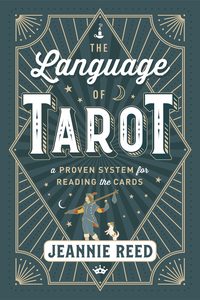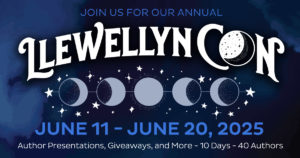The Language of Tarot

In The Language of Tarot, Jeannie Reed teaches us her system for reading the cards, a system that has satisfied her clients for over 30 years. Tarot is a language and when you learn it, you can read the cards like reading a book. You can read an excerpt below and find out more HERE.
Telling Stories
Let’s say a reporter is walking down the street and comes upon the scene of a fire.
He pulls out his notebook and starts asking questions: “What happened? Do you know how it started? Do you know where it started? Is anybody hurt? What hospital did the victims go to?” And by asking all kinds of questions like this, the reporter puts together the story of that fire.
Your job as a card reader is to ask yourself the same types of questions as you draw cards to respond to your client. I’m saying throughout this book that a good reader doesn’t have to rely on intuition alone. God gave your brain two hemispheres. Use them!
On the other hand, if you’re the rare reader gifted enough to do all the work purely by intuition, that’s wonderful!
So to do a good reading we need to ask ourselves questions, and draw cards to answer those questions. And then we can tell our clients complete stories: stories that have beginnings, middles, and endings. Who, what, when, where, why, how.
Say you’re reading a client with job problems. Well, maybe there is one big story that started way back when, when the person made what seemed to be even a small decision, and it ended up impacting his life to this day. (For example, say the client chose a certain career and is no longer happy at it).
Well, if you’re going to be any help at all, you need to be able to tell the client when something started, what’s going on now, and where the situation is heading, so the client can see the beginnings and attempt to understand the old motives vs. the new. You need to be able to explain what the client can do now to change direction a bit, to diversify or to make a completely new choice. I see myself as a namer of options and outcomes: if you do this [method], you can expect that.
So: Say you’re reading for a client who chose to be a doctor because the men in his family always become doctors. You see the father expecting it of his son (The Emperor); you see the son not being listened to (the Page of Rods/Wands reversed); you see the guy is a good doctor (The Magician) but unhappy (the Three of Swords) despite the money he makes (the Six of Pentacles).
So now you can tell him his issue goes beyond not liking his career. You can suggest that his choice in the first place seems to have had something to do with displeasing his father way back when. So you take him back to when he used to talk about his owndreams and was ignored, when he was a kid. Now your client can start to see his current issue in terms of thelargerpicture of his whole life. It can become clear to him that if he chooses to leave medicine, he may be risking the wrath or rejection of his father. Only he can decide if this matters anymore.
And then you line up as many cards as it takes to see what can happen if he does choose to stop being a doctor.
Whatever shows up, you can now tell a story with a beginning, middle and end. This is typical of my readings. I try to find the whole enchilada. I do it so people can make choices and decisions without lacking pieces of important information.
And if you start reading cards like you’re reading these sentences, you can too.







